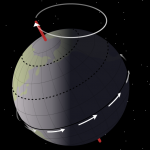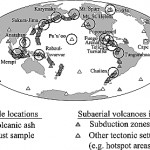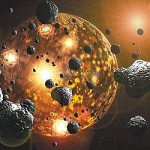Not to be outdone by the October blood moon, the sun put on its best Halloween face and imitated a jack-o'-lantern on October 8. The brighter regions—its eyes and mouth, so to speak—appear as such due to magnetic fields in the corona (the sun's atmosphere) that cause the release of more energy.
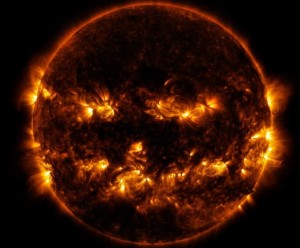
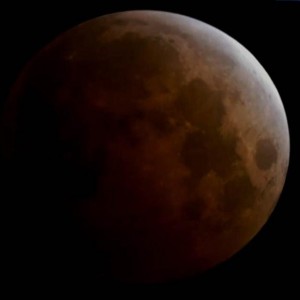
Jack-o'-lantern sun (left) and blood moon (right) on October 8, 2014. Image credit: NASA
The moon, however, is doing its best to steal the show, with its tetrad: an array of four total lunar eclipses, each spaced about six months apart. The first two more eclipses bedazzled stargazers on April 15 and October 8 of this year, with two more on the way in 2015, on April 4 and September 28.
On average, lunar eclipses decorate the skies twice yearly, but tetrads—which involve four total lunar eclipses—are more rare. Tetrads have happened 8 times in the 21st century, but from 1300 to 1600, there were no tetrads at all. The other two types are lunar eclipses are penumbral, and partial, in which part of the moon is darkened.
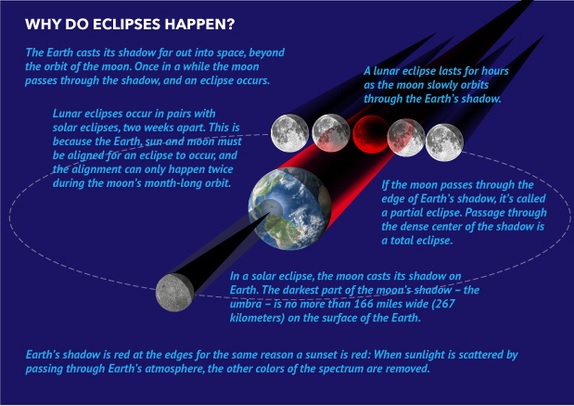
Lunar eclipses. Image credit: Space.com
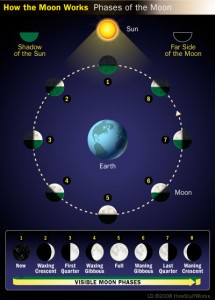
Lunar phases. Image credit: HowStuffWorks
So why don't we get a total lunar eclipse every full moon? During full moons, the sun, earth, and moon are aligned in two dimensions along the horizontal plane. Typically, the moon is below or above the path of light from the sun to earth, and so is fully lit from the sun. During a total lunar eclipse, however, the moon is vertically positioned such the earth blocks all of the light from the sun, and instead receives lighting from the earth's atmosphere as it passes by.
Fun fact: The moon rotates about its own axis once every 27.5 days, while it also completes its orbit around the earth during the same time period, ensuring that we only ever see one side of the moon.

